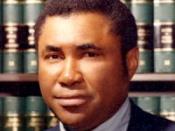This paper will outline the complaint process for John, an employee in the private sector that wants to file a discrimination complaint. The paper will also attempt to explain the civil litigation that may follow if the EEOC, through arbitration and mediation cannot settle a complaint.
The Equal Employment Opportunity Commission, or EEOC, is a United States federal agency tasked with ending employment discrimination in the United States. President John F. Kennedy by Executive Order 10925 signed the document into law and it can bring suit on behalf of alleged victims of discrimination against private employers. It also serves as an adjudicatory for claims of discrimination brought against federal agencies. The EEOC's mandate is specified under Title VII of the Civil Rights Act of 1964, the Equal Pay Act, the Age Discrimination in Employment Act (ADEA), and the Americans with Disabilities Act (ADA).
There are several steps involved in filing a discrimination claim against and employer.
There are internal processes and external processes that will require a labor lawyer. There are many types of discrimination as well. Some of these types of discrimination include discrimination based on race, color, religion, sex, or national origin, age, or sexual preference.
Any individual who believes that his or her employment rights have been violated may file a charge of discrimination with EEOC. An individual can file a claim at their local EEOC office or via mail. The following information must be provided to file a charge. The complaining party's name, address, and telephone number; the name, address, and telephone number of the respondent employer, employment agency, or union that is alleged to have discriminated, and number of employees (or union members), if known; a short description of the alleged violation (the event that caused the complaining party to believe that his...


